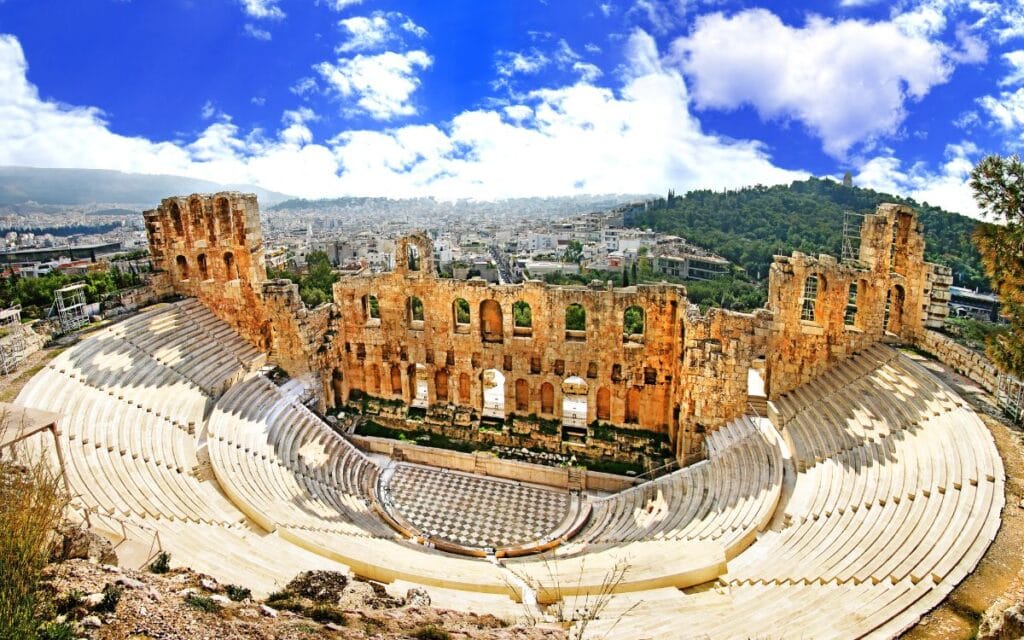Theater of Dionysus
Theater of Dionysus

Constructed in the 5th century BCE, the Theater of Dionysus is believed to be the oldest theater in Greece. It was the site of many important events, including the first public performances of the great Greek playwrights such as Aeschylus, Sophocles, Euripides, and Aristophanes. These playwrights were instrumental in shaping the foundations of Western theater, and their works were performed here during the annual Dionysian festivals, which celebrated the god of wine and drama. These festivals were not only religious in nature but also a time for Athens to showcase its artistic and intellectual prowess to both the citizens of the city and visitors from across the Greek world.
The theater itself originally had a seating capacity of around 17,000 spectators, though it has undergone several modifications throughout history. Today, much of the structure is in ruins, but its significance is still palpable. The ancient theater was built into the slope of the Acropolis hill, taking advantage of the natural landscape to create a sense of harmony between the built environment and the natural world. The stage, known as the “orchestra,” was a circular area where actors performed, while the seating area, or “theatron,” was constructed in a semicircular shape, ensuring that all spectators had a clear view of the stage.
The Theater of Dionysus played a crucial role in the development of ancient Greek theater. It was here that many of the most important innovations in theater were introduced. For example, it was at this theater that the introduction of the second actor by Aeschylus and the third actor by Sophocles revolutionized Greek drama by allowing for more complex dialogues and interactions between characters. It was also here that the chorus, a group of performers who sang and danced in unison to narrate and comment on the events of the play, was a central element in the performance.
The Dionysian festivals held at the theater were some of the most important events in ancient Athens, not only for their religious significance but also for their cultural importance. The playwrights would present their new plays as part of a competition, and the winners would receive great honor and recognition. These festivals attracted large audiences, including influential politicians, philosophers, and citizens of Athens, and became a vital part of the city’s civic and cultural life.
Over time, the Theater of Dionysus underwent modifications and renovations, particularly during the Hellenistic and Roman periods. During these times, the theater was expanded and improved, with new architectural features, including marble seating and an elaborate stage. However, it was not until the 19th century, when systematic excavations were conducted, that much of the theater’s original structure was uncovered.
Today, the Theater of Dionysus is an essential part of Athens’ archaeological heritage. Visitors can walk through the ruins and imagine the performances that took place here centuries ago. The site is often used for modern performances, including plays and musical concerts, bringing the tradition of ancient Greek theater into the present day. The view of the Acropolis rising above the theater adds to the breathtaking atmosphere, making it a unique and unforgettable experience for those who visit.
In addition to its historical and cultural significance, the Theater of Dionysus continues to serve as a testament to the enduring legacy of ancient Greek theater. It represents the birthplace of one of the world’s greatest artistic traditions, and its influence can still be felt in the performing arts today. For anyone interested in the origins of drama, theater, and performance, a visit to the Theater of Dionysus is a must. It is a place where the past and the present come together, offering a unique glimpse into the cultural heart of ancient Athens.

